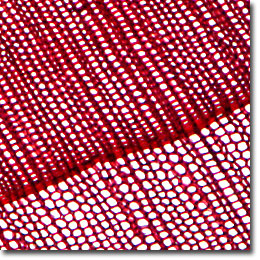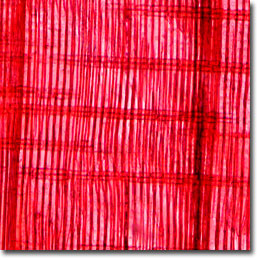The Eastern Red Cedar
The Red Cedar (Juniperus virginiana; also called the Tennessee Red Cedar, the Pencil Cedar, or simply the Red Cedar) is a softwood tree primarily found in the eastern United States from the Hudson Bay and the Great Lakes Region south to Texas and Florida. The tree grows to an average height of 50-75 feet, but it can reach 100 feet in some instances. The sapwood is almost white in color, while the heartwood is purple to rose-red when first exposed, but aging to dull red or red-brown.

Cross Section

Radial Section

Tangential Section
Young red cedar trees are columnar or conical, but mature into a broader and spreading tree with bark that peels off in long strips. Needle-like leaves grow in groups of three on young plants with the branches becoming scale-like, pointed and overlapping, as the tree grows older. Wood from the red cedar is very fragrant.
Red cedar has a very dense crown and reddish-brown bark and will grow on most types of soil. The tree is propagated through seed, and it self-seeds and grows so rapidly that it can quickly take over pastures. Red cedar wood is particularly resistant to rot and was once known as "The Tree of Life" to many Indian tribes, because they were able to use practically every piece of the tree. The wood is used for chests, wardrobes, and closet linings (because of its color, excellent working qualities, fragrance, and reputed moth-repellent properties). The name pencil cedar is derived from the extensive use of this wood to make pencil slats. At one time this was the most important use for cedar but today, because of the scarcity of suitable material, the wood is used in less than 10 percent of the pencils produced in the United States.
Microscopic examination of iron-alum hematoxylin and safranin stained thin sections (see the digital images presented above) reveals an abrupt transition from spring to summer wood, with the spring wood occupying most of the ring. As with a majority of the softwoods, the tracheids range between 20 and 30 micrometers in diameter with bordered pits in a single row or rarely paired along the radial walls. Cells of longitudinal parenchyma are solitary and banded with dark, gummy contents. The rays are uniseriate, containing one to six cells and are less than 250 micrometers in height.